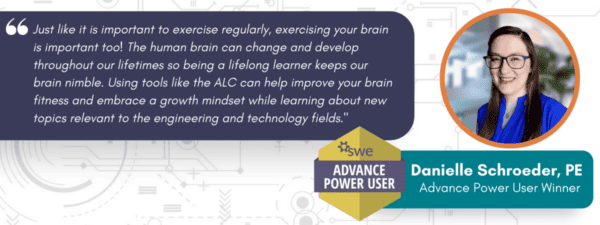The Society of Women Engineers (SWE) has long been dedicated to empowering women in engineering and technology, but despite progress, systemic workplace barriers continue to hold women back in their careers. Today, women constitute only 13% of the engineering workforce in the United States and 31% globally (UNESCO, 2023), indicating persistent barriers that prevent women from entering or push women out of the field.
While some of this gap can be attributed to individual factors, a great deal stems from systemic obstacles that create workplace cultures disproportionately inhospitable to women engineers. These systemic factors collectively impair women engineers’ career trajectories by depriving them of advancement opportunities afforded to their male colleagues. From biased evaluation systems to work norms incompatible with caregiving duties, women engineers frequently find themselves unable to access the training, leadership roles, and mentorship necessary for professional growth and advancement.
To tackle this issue head-on and define the strategy for SWE to affect these barriers, a subteam within the FY24 Senate embarked on a mission to identify and address these obstacles, ensuring that we can strategically advance our mission to create a more inclusive and equitable work environment for women in engineering and technology.
Problem Statement
Systemic workplace barriers are policies, procedures, or practices that unfairly discriminate at a systemic level in the (engineering) workplace, preventing individuals from participating fully in situations such as finding jobs, getting promoted, getting retained, etc.
Addressing workplace barriers is complex since it accounts for intersection of barriers due to an individual’s identity (e.g., gender, race, ethnicity, socioeconomic status, disability, sexual orientation, etc.) and how the identities interact with systemic practices. We were intentional about focusing our recommendations on how SWE can help improve the system, not just empower or educate individuals.

Each year, the Senate has subteams that investigate critical cross-industry topics to inform SWE’s strategic vision and programmatic focus. This year, the Systemic Workplace Structures subteam was established to expand the Society’s understanding of systemic workforce barriers for women in engineering and technology globally.
This study benefited from diverse experiences and backgrounds. The subteam members’ unique experiences and perspectives represented women immigrants, SWE global ambassadors, and representatives of multiethnic and multicultural backgrounds across SWE’s global platform and affinity groups across the health care, aerospace, semiconductor, automotive, fintech, and oil and gas industries.
This team of women is experienced with emerging technologies, manufacturing, systems engineering, entrepreneurship, product development, program management, and business development, and their living and working experiences span Asia, the Americas, Europe, and Africa ― all of which align with SWE’s global reach.
The subteam’s efforts were advised by Board of Directors (BOD) members, who provided guidance based on their experience and as part of SWE leadership.
Senate Systemic Workplace Structures subteam members consist of: Sreyoshi Bhaduri, Erin Sawyer, Megan Beck, Shelley Stracener, Inga Urbina, Jisha Bhattacharjee, Sarvenaz Myslicki, Enanga Fâlé, and Silvia Karlsson. Their varied experiences and expertise came together to identify and address the systemic barriers holding women back in their careers, attempting to make this subteam’s findings and recommendations comprehensive and impactful.
Approach
Our subteam sought to identify structural disadvantages that members across the globe continue to face. Identifying these barriers and recommending strategic initiatives to address them will empower SWE to drive changes that create more inclusive workplace policies and practices for our engineering community. Our Senate subteam adopted a comprehensive approach to examine systemic biases faced by women in workplaces:
- First, we identified and categorized various systemic workplace barriers, drawing from SWE resources and both internal and external research. This involved analyzing scholarly articles, industry reports, and expert opinions to create an exhaustive list of biases that women encounter in their careers. We focused on biases that were resulting from systemic barriers.
- Next, the subteam assessed existing SWE programs and initiatives that could potentially address these biases. We mapped current interventions to biases and identified areas where additional research or program development was needed. This involved interviewing SWE members across affinity groups, the Corporate Partnership Council (CPC), and global affiliates, while simultaneously reviewing existing literature to pinpoint gaps in support and resources.
- Finally, the subteam developed targeted recommendations to bridge the identified research gaps and proposed to extend or create new SWE initiatives. These recommendations aim to directly address systemic workplace barriers and promote gender equality in the workplace. By combining rigorous research with practical solutions, our subteam’s study offers actionable insights for creating more inclusive work environments where women can thrive and reach their full potential.
Our Findings Are the First Step
The subteam’s findings will fuel much-needed conversations to shape SWE’s strategic directions in future years. We found several indicators that the COVID-19 pandemic exacerbated systemic inequalities, especially for certain groups (e.g., working mothers, those from marginalized communities, etc.). McKinsey’s 2022 Women in the Workplace study found that post-pandemic, “The Great Breakup” resulted in women leaders leaving their companies at the highest rate ever seen — and at a much higher rate than men leaders.
Systemic obstacles impacting women engineers, such as biased evaluation systems, exclusionary policies, and lack of leadership opportunities, still persist post-pandemic ― and in some instances have gotten worse. SWE members, as shown in the excerpts below, have faced these obstacles due to systemic inequities and continue to face them.
Image description: The image above contains two written excerpts from anonymous SWE members during affinity group discussions. The first quote reads “I was passed over for a promotion because I was pregnant and my boss thought I wouldn’t be committed to my job. It was frustrating to have my abilities and dedication questioned based on my gender.” The second quote reads “As a senior executive, I’ve faced biases in the form of stereotypes and assumptions about my leadership style. I’ve had to work twice as hard to prove my worth and break through the glass ceiling.”
What’s Next and What Can WE All Do?
As engineers return to offices, the workplace cultures, assumptions, and policies that previously disadvantaged women engineers will likely reemerge unless proactively addressed. Additionally, new hybrid or flexible work policies could evolve in ways that inadvertently discourage women’s participation unless consciously developed to support inclusion. There are hopes for the pandemic recovery to create opportunities for reinventing the engineering workplace.
However, without concerted efforts from organizations like SWE that are committed to improving inclusion in engineering, overcoming the economic and logistical challenges of the post-lockdown transition could displace focus from addressing systemic equity issues. Recommendations from our subteam’s research will be presented to the Society’s BOD who will consider these recommendations in developing the SWE Operational Plan for coming years. This is an important conversation, and we encourage more SWE members to get involved in these discussions.
Here are some of our recommendations for what you can do to make a difference:
1. Get Active Within SWE
Join a local SWE section, attend events, and participate in committees or affinity groups that align with your interests. This will help you connect with other women in STEM, build your professional network, and gain access to resources and support. Consider taking on a leadership role within your local section or committee to further develop your skills and make a meaningful impact.
2. Consider Applying to the SWE Senate
If you’re passionate about driving change and addressing systemic workplace barriers, consider applying to join the SWE Senate. As a member of the Senate, you’ll have the opportunity to continue these conversations from a strategic lens, shape SWE’s strategic direction, contribute to initiatives and programs, and collaborate with other dedicated individuals to advance the organization’s mission.
3. Advocate for Change in Your Workplace and Public Policy
Use findings from SWE Research and SWE Public Policy to advocate for change in your own communities and workplace. Share our findings with your colleagues and leadership and use the information to spark conversations and drive action.
Remember, every small action counts, and collective efforts can lead to significant positive change!
Read More About the SWE Senate:
- SWE Senate Spotlight: Learn About the Senator Role
- SWE Senate Year-End Update
- SWE Senate Explores Membership Belonging Within SWE
- FY24 SWE Senate Strategic Planning Subteam Findings and Recommendations
Author
-

SWE Blog provides up-to-date information and news about the Society and how our members are making a difference every day. You’ll find stories about SWE members, engineering, technology, and other STEM-related topics.






